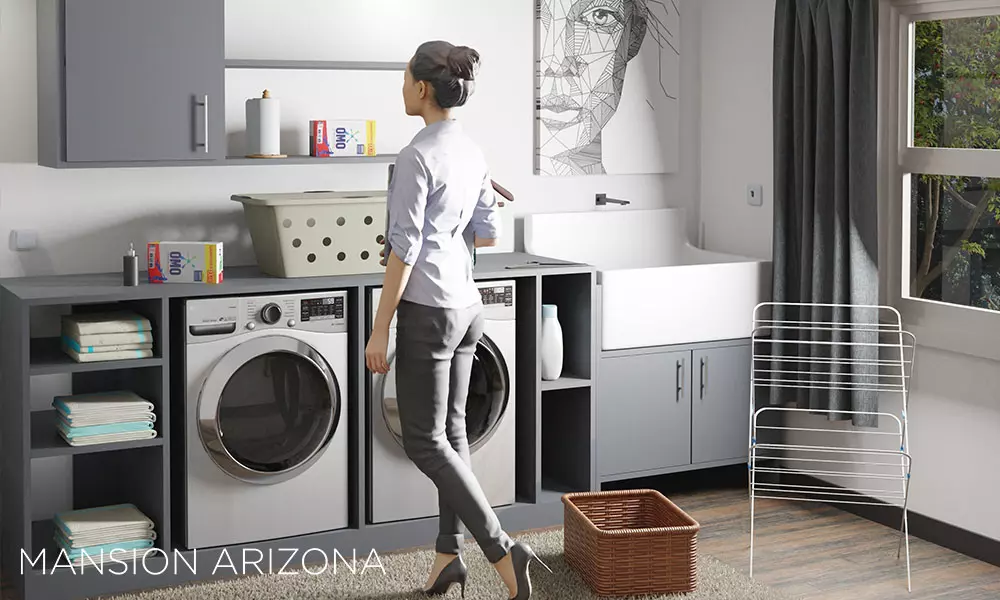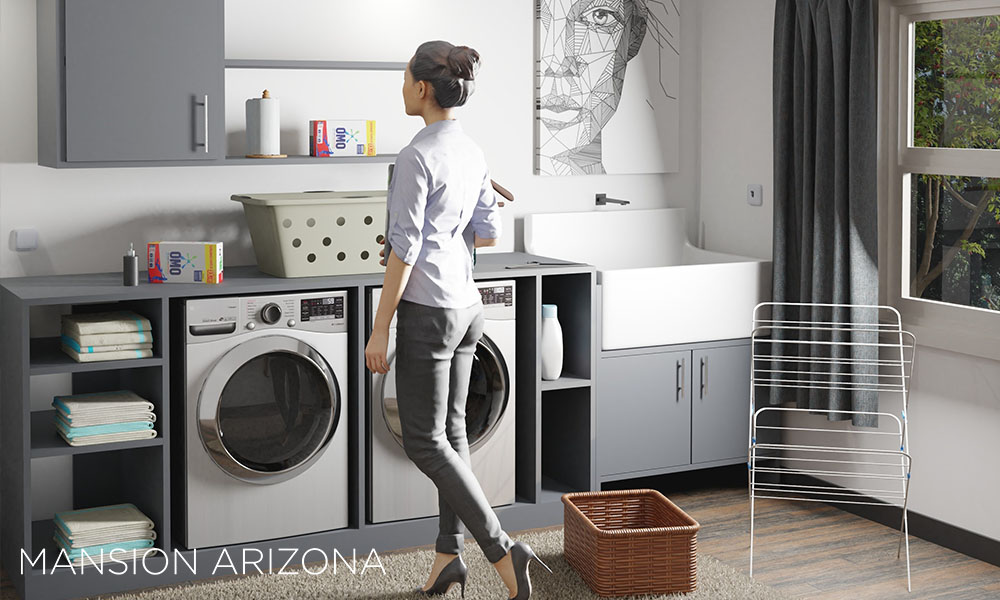How to Find the Best Location for Your Laundry Room

Laundry rooms are an essential part of a home. They provide a dedicated space for washing, drying, and folding clothes. But where should you locate your laundry room? This article will guide you through the process of finding the perfect spot for your laundry room, taking into account various factors such as space, ventilation, plumbing, noise, and accessibility. By the end, you'll have a clear idea of the best location for your laundry room, making laundry days a breeze.
Important Factors to Consider
Space
The first thing to consider is the amount of space you have available. Your laundry room should be large enough to accommodate your washer, dryer, and any additional storage you need. Ensure there is sufficient room to move around and perform laundry tasks comfortably.
Ventilation
Proper ventilation is crucial for a laundry room. Damp clothes and the heat generated by the dryer can lead to mold and mildew growth. Make sure your chosen location has good airflow, preferably with a window or exhaust fan.
Plumbing
Your laundry room will require access to hot and cold water lines, as well as a drain for the washer. Consult a professional plumber to determine the feasibility of installing these connections in your chosen location.
Noise
Washing machines and dryers can generate significant noise, especially during spin cycles. Consider placing your laundry room in an area where the noise won't disturb you or your family members.
Accessibility
For convenience, your laundry room should be easily accessible from the areas where you generate dirty laundry, such as bedrooms and bathrooms.
Top Locations for Your Laundry Room
Near the Bedrooms
Locating your laundry room close to the bedrooms can be a practical choice. This makes it easy to transport dirty laundry to the washing machine and clean clothes back to the bedrooms.
Near the Kitchen
The kitchen is another suitable location for a laundry room, as it often has easy access to plumbing and electrical connections. This location can also be convenient for multitasking while cooking or cleaning.
Mudroom or Garage
A mudroom or garage can serve as a practical laundry room location, especially for larger families or those with pets. This location helps contain dirt and clutter from entering the main living areas of the home.
Basement
A basement can be an ideal location for a laundry room, as it typically provides ample space and isolation from the rest of the house. This can help minimize noise and vibration issues.
Pros and Cons of Different Locations
Bedrooms
Pros:
- Convenient for transporting laundry to and from bedrooms
- Reduces the need to carry laundry up and down stairs
Cons:
- Noise and vibration from appliances may disturb occupants
- Limited space in bedrooms may not accommodate a full laundry room setup
Kitchen
Pros:
- Easy access to plumbing and electrical connections
- Allows for multitasking while cooking or cleaning
Cons:
- May create clutter and reduce available kitchen space
- Noise from appliances may disrupt meal preparation or conversation
Mudroom or Garage
Pros:
- Keeps dirt and clutter away from main living areas
- Provides a larger space for laundry equipment and storage
Cons:
- May be inconvenient to access from bedrooms or other living areas
- Temperature fluctuations in garages may impact the performance of laundry appliances
Basement
Pros:
- Offers ample space for a full laundry room setup
- Isolates noise and vibration from the rest of the house
Cons:
- May be inconvenient to access, especially for those with mobility issues
- Requires carrying laundry up and down stairs
Making the Final Decision
To find the best location for your laundry room, weigh the pros and cons of each option and consider which factors are most important to you. Consult with a professional plumber and electrician to ensure that your desired location is feasible from a technical standpoint.
Conclusion
Finding the perfect location for your laundry room requires careful consideration of various factors, including space, ventilation, plumbing, noise, and accessibility. By evaluating the pros and cons of different locations within your home, you can make an informed decision and create a functional and efficient laundry space that meets your unique needs.
FAQs
1. Is it better to have a laundry room on the main floor or in the basement?
The choice between a main floor or basement laundry room depends on your personal preferences and needs. A main floor laundry room may be more convenient and accessible, while a basement laundry room can provide more space and noise isolation.
2. Can I convert a closet into a laundry room?
Yes, you can convert a closet into a laundry room if it is large enough to accommodate your washer, dryer, and any necessary plumbing and electrical connections. Consult with a professional plumber and electrician to determine the feasibility of this conversion.
3. How do I ensure proper ventilation in my laundry room?
To ensure proper ventilation in your laundry room, consider installing an exhaust fan or providing a window that can be opened for fresh air. This will help to prevent the buildup of moisture and the growth of mold and mildew.
4. Can I have a laundry room without a dedicated space for it?
Yes, you can create a laundry area within a larger room or space, such as a bathroom, kitchen, or mudroom. Just ensure that you have adequate space for your washer and dryer, as well as any necessary plumbing and electrical connections.
5. How can I reduce the noise from my laundry appliances?
To reduce noise from laundry appliances, consider placing them on rubber or foam anti-vibration pads. Additionally, choose a location for your laundry room that is away from bedrooms or other quiet areas of your home.
Categories
Recent Posts








